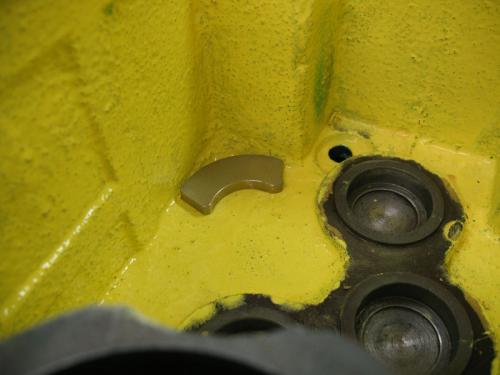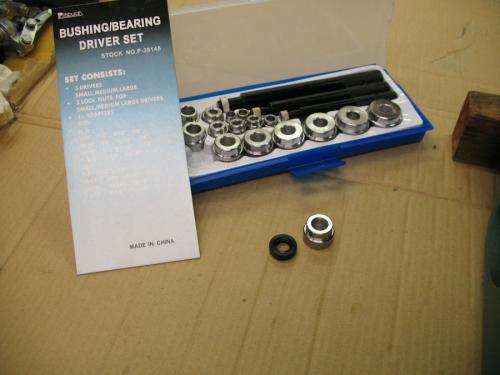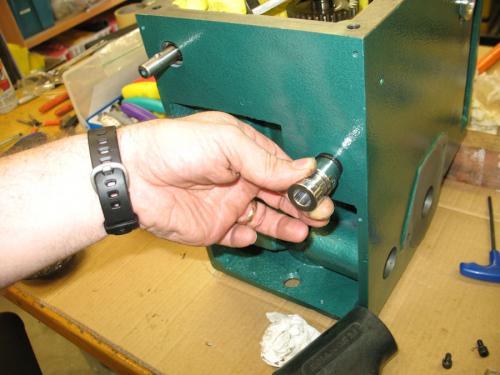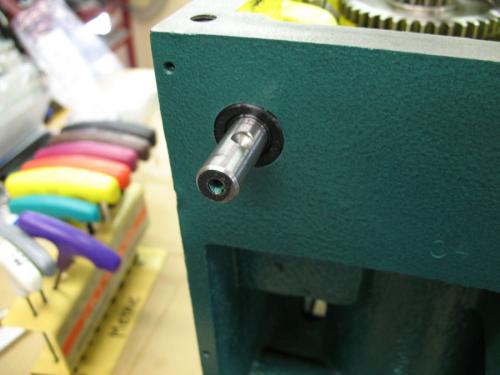05-10-2012, 11:33 PM
(This post was last modified: 05-10-2012, 11:41 PM by henryarnold.)
I'm now ready to start installing the gears and other hardware inside the head. The speed selector rods should be installed first because it's hard to install them after the gear shafts are installed. Remove the speed selector forks and then slide them in from the front. They are stopped by a circlip which I never removed. The seals go in after the rods are installed. Do not install the seals first because the seals hide the circlip and it's impossible to install the circlip if you install the seals first. Loosely install the selector arms. Later we will adjust them and tighten them up.

I had two powerful magnets. I put them in two of the corners of the bottom of the head. Some people prefer a magnetic dipstick or drain plug. This is what I already have. It should keep metal particles away form my bearings and gears.

Ed made a tool to drive the selector shaft seals. I happened to have this bearing/seal driver set which came from Harbor Freight. Either way, you'll need a tool to push the seals in without damaging them. The tool needs to be a little smaller than the diameter of the seal and have a clearance hole for the shaft.

I used a driver with the correct diameter and then used another driver to extend beyond the length of the shaft. Tap the seals in with a rubber mallet. Many light taps are better than big blows for this job.

The seals should be flush with the surrounding metal. The front panel covers this area.

I had two powerful magnets. I put them in two of the corners of the bottom of the head. Some people prefer a magnetic dipstick or drain plug. This is what I already have. It should keep metal particles away form my bearings and gears.
Ed made a tool to drive the selector shaft seals. I happened to have this bearing/seal driver set which came from Harbor Freight. Either way, you'll need a tool to push the seals in without damaging them. The tool needs to be a little smaller than the diameter of the seal and have a clearance hole for the shaft.
I used a driver with the correct diameter and then used another driver to extend beyond the length of the shaft. Tap the seals in with a rubber mallet. Many light taps are better than big blows for this job.
The seals should be flush with the surrounding metal. The front panel covers this area.
henryarnold, proud to be a member of MetalworkingFun Forum since Apr 2012.










